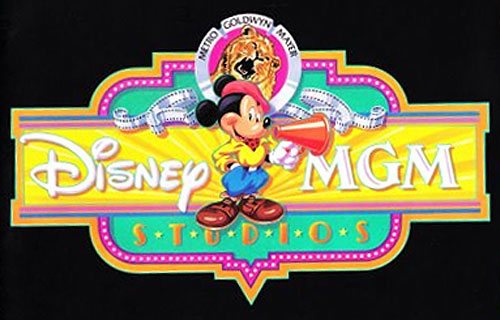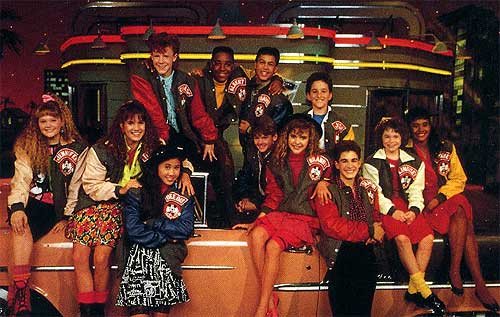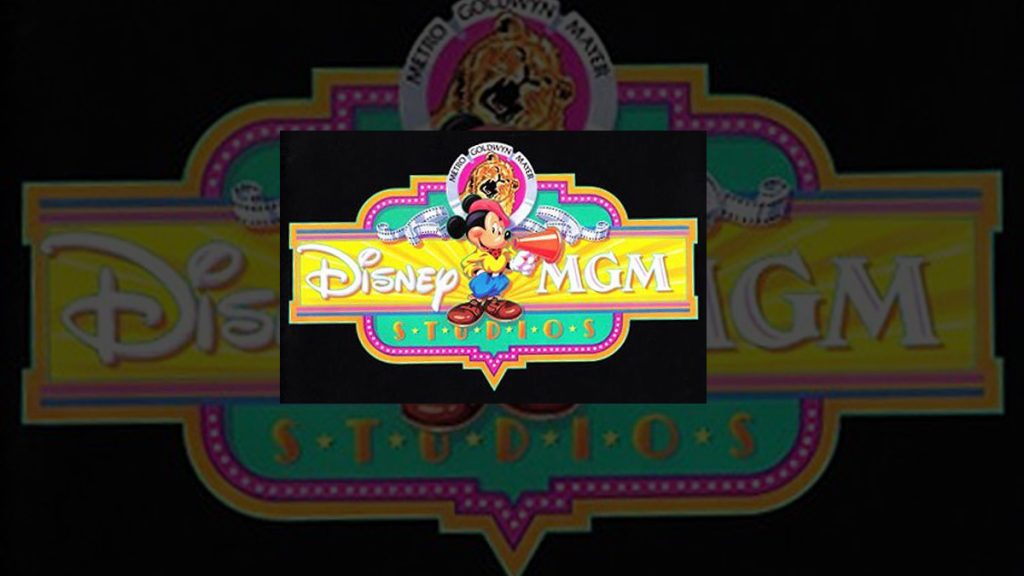Earlier this week, Steve B. wrote in to ask:
Dear Jim,
When the Disney-MGM Studios theme park opened, it was
promoted as a working studio. Both live
action and animation were being produced there.
There was discussion in the news about the high costs in California
driving production out of that state and into places like Florida.
Today, the working
studio idea is a thing of the past, the animation building no longer features
real animators working on future films, the sound stages are being converted
into rides like Toy Story Midway Mania, and the backlot tour now features
amazing views of tires stacked in a room for use by the car stunt show. In the meantime, cities like Chicago, not
exactly known for right-to-work laws or cheap labor, are seeing an increase in
film production. Why for?

Copyright Disney Enterprises, Inc. All rights reserved
Dear Steve B.,
To be fair, when Universal Studios Florida first opened in
June of 1990, it too was touted as a working studio. Back then, Orlando area
officials were happy to talk up the idea that Central Florida was becoming
Hollywood East. More importantly, that all manner of high profile motion
pictures & television shows would soon begin shooting at Disney-MGM &
USF. Which would then translate into lots of high paying jobs & steady work
for Central Floridians.
Which isn’t what happened.
Don’t get me wrong. A few films were shot on those state-of-the-art
soundstages that the Imagineers had built at Disney-MGM. The plane interior
sequences for “Passenger 57” come immediately to mind. Likewise the Anthony
Hopkins film, “Instinct.” And a handful on non-Disney-owned and/or produced TV program
like “The Adventures of Superboy,” “Thunder in Paradise” and HBO‘s “From the Earth to the Moon” were shot in and around this theme park’s backlot. But
beyond that, it was mostly game shows like “Win, Lose or Draw” and “Let’s Make a
Deal” or Disney Channel series like “MMC” and “Adventures in Wonderland.”

The cast of MMC AKA The Mickey Mouse Club. Copyright Disney Enterprises, Inc.
All rights reserved
Universal had a similar sort of problem when it came to luring production to USF. I remember that – back when a good portion of Universal
Studios Hollywood‘s New York Street set burned down in November of 1990 – that production
of “Oscar” (which – ironically enough – was a Touchstone Pictures release) was
moved to the New York City-themed section of Universal’s Florida theme park.
And – of course – there were all of those family-friendly sitcoms like “Clarissa Explains It All” and “Kenan and Kel” that were shot at USF’s Nickelodeon Studios
facility. But beyond that, it was mostly music videos and the occasional commercial,
But as to why Orlando didn’t become a major movie & television production
center … There were a number of factors, actually. First of all, the cost savings that you mention (which was
supposed to come from shooting in a right-to-work state like Florida) was often
offset by the enormous additional cost of flying name talent & key creatives in from
LA. Not to mention paying for meals & housing for these folks over the
length of the shoot.
More to the point, many of the filmmakers that were sorely tempted to make movies at Central Florida’s Central Florida production facilities were then put off by the idea of having tourists look in on them as they worked. It didn’t matter that
the Imagineers and/or Universal Creative had made these glassed-in viewing
areas sound-proof. Or – in some cases – had lined these production corridors with
one-way mirrored glass, so that these auteurs wouldn’t even known when they
were being observed. Just the idea that there were people up there, potentially
looking down (figuratively as well as literally) at them working was enough to
make some directors & actors deliberately take a pass on working at
Disney-MGM and/or USF.
Ironically enough, the one real success that came out of
Disney & Universal’s flirtation with establishing full-blown production
facilities in Central Florida was the one place where the people who worked
there knew that they were always being observed.
Max Howard and the artists & animators who made up the Opening Day team at
Walt Disney Feature Animation Florida
I’m talking – of course – about that satellite studio which
Walt Disney Animation Studios staffed and maintained at MGM. Which – thanks to
its giant glass windows — gave WDW visitors the chance to peer down into “The Pit” (that’s
what the artists & animators who actually worked in this exposed studio
floor section of the Animation Tour called it) and see what work was being done at that
time on WDAS’s next short and/or soon-to-be-released feature-length project.
Of course, what’s kind of ironic about this particular turn-of-events
is that the animators who worked in the “Magic of Disney Animation” fish bowl
were never supposed to work on feature-length releases like “Beauty and the Beast” and “The Lion King.” The original plan for the Central Florida facility
is that the artists based here would only be working on special projects like the Roger Rabbit shorts
and Mickey-based featurettes like “The Prince & The Pauper.”
But when “The Little Mermaid” was released in November of
1989 and then turned into this genuine box office phenomenon, Disney’s future plans
for its feature animation department changed virtually overnight. Then-studio
head Jeffrey Katzenberg suddenly wanted to move WDAS from a one-new-feature-film-every-two-years
production schedule to a much more ambitious plan. One that called for the
Studio’s staff to crank out a brand-new full-length animated feature every single
year.
And in order to pull off what Jeffrey was planning … Well, that
meant that it was “All Hands on Deck” time at Disney-MGM. With the
relatively young crew at Feature Animation Florida (which had only been working
for the Mouse for about six months at this point) suddenly being handed entire
sequences for “Beauty & the Beast” and “The Lion King” to animate. And given
what a great job they did with those assignments, the artists and animators at
WDFAF eventually found themselves working on their very own feature-length project, “Mulan.”
Copyright Disney Enterprises, Inc. All rights reserved
I have to tell you folks that – between May of 1989 and March of 2004 — I
spent many happy hours wandering the corridors of Feature Animation Florida. I
knew dozens of the artists & animators that worked there at that time. And you could not
ask for a nicer, more talented & dedicated group of people. Who would then do flat-out amazing work on Disney hand-drawn movies like “Mulan,” “Lilo & Stitch” and “Brother Bear.”
And when Walt Disney Feature Animation (back in the bad old
days when David Stainton was running the Mouse Factory) began talking about
reinventing itself in 2002 & 2003 so that Mickey’s movies could then better
compete with those that were being produced by Pixar, DreamWorks Animation and Blue Sky Studios, I always
kind of hoped that Stainton would leave Feature Animation Florida alone. That –
given the charming, quirky, ambitious, highly successful hand-drawn films that the team at
Disney-MGM were consistently turning out at this point – you don’t fix what ain’t broke. It only made sense to
maintain the status quo in Orlando and then limit Feature Animation’s reinvention to
the crew that was working on the Burbank Lot.
But David … He didn’t see things that way. He wanted all of
Disney’s artists to be in one place. So Stainton not only shut down Feature
Animation Florida, he also pulled the plug on Disney’s Paris-based facility (i.e.
the animation studio that did the bulk of the work on “A Goofy Movie” and “Tarzan“).
He then gutted hand-drawn animation in an attempt to turn Disney Feature
Animation into this CG-only production facility.
And we all remember (with the possible exception of the people
in charge of Paramount’s Motion Picture Group. Who just hired David to be the president
of this studio’s new animation division) how well that went.
Concept art for WDI’s original vision forDisney-MGM’s Muppet Studios “land.” Which — in
addition to MuppetVision 3D — was supposed to have featured a Swedish Chef-themed
restaurant in addition to a “Great Muppet Movie” ride-through attraction. Copyright
Disney Enterprises, Inc. All rights reserved
Anyway … Getting back to Disney-MGM Studios … Excuse me …
Disney’s Hollywood Studios and Universal Studios Florida: The Imagineers
tried to address the whole
big-name-filmmakers-who-don’t-like-being-looking-at-while-they-work issue in
1990 by proposing building four more soundstages.
Only these new production facilities wouldn’t be located inside of
the studio theme park. They were actually supposed to built on the other
side of World Drive, directly across from Disney-MGM. Which would then
insure that — if they ever wanted to come shoot a movie in Central
Florida — the George Lucases, Steven Spielbergs, Peter Jacksons and
James Camerons of the world could then work in private. Well away from
the prying eyes of WDW Guests.
Of course, by doing something like
this, it would then become much, much harder to sell Disney-MGM Studio theme
park as this working studio where Disney World visitors would then be able
to see really-for-real movies & TV shows being made. Which
is why — about this same time — it was revealed that the Sunset
Boulevard and Muppet Studios expansion projects were in the works. With
the hope that — once all of these new rides, shows and attractions came online at Disney-MGM — the paying customers
wouldn’t even notice that they were seeing precious little work actually being
done at this allegedly working studio.
Mind you, a constant source
of frustration for the Imagineers was that Disney’s own movie divisions
— Walt Disney Pictures, Touchstone Pictures and Hollywood Pictures — were reluctant to come on down to Central Florida and then shoot a film at the
Company’s studio theme park. Though — to be fair — the executives who
worked for these three divisions at the Studio would then argue that
they had a responsibility to Disney’s shareholders and the Company’s
board of directors to be fiscally responsible. And after weighing the
cross-promotional possibilities of shooting something like “Honey, I
Sent the Kids to the Moon” or “Honey, I Turned the Kids Invisible”
(Believe it or not, these were actually premises that were seriously considered for the proposed third & fourth installments of the “Honey” series.
Disney even went so far as to register these titles with the MPAA [i.e. The Motion Picture Association of America] — along
with “Honey, I Switched Brains with the Dog” — before they eventually opted
to go the direct-to-video route with 1997’s “Honey, We Shrunk Ourselves“) at Disney-MGM versus the cost savings that would be had by shooting
this very same movie up in Toronto or Vancouver, the projected cost savings would almost
invariably win out.
So in spite of the tens of millions of dollars
that had been poured into building all these state-of-the-state soundstages in and
around Orlando, Central Florida’s dream of becoming Hollywood East
slowly faded away. These days, while you’ll occasionally see a TV game
show like “Wheel of Fortune” being shot at Walt
Disney World and the “IMPACT Wrestling“
show is still being produced at Universal
Studios Florida, most of the time these buildings stand empty. Which is
why — for years now — USF has staged some of the mazes that it builds
annually for “Halloween Horror Nights” inside of these soundstages.
The “IMPACT Wrestling” set on a Universal Studios Florida soundstage
Which now brings us to the problem that the Imagineers have
been struggling with for the better part of a decade. In that Disney’s movie-themed theme park was originally built around all of these soundstages & production facilities that were meant to support a working studio. And given that many of these buildings were deliberately designed so that the Guests could then peek in on the work that was being done … Since there haven’t been any movies or TV shows of note being shot at the studio theme park in years, how do you now reinvent Disney’s
Hollywood Studios to reflect that reality?
WDI has learned the hard way (i.e. the congestion problems
that continually plaque Pixar Place. Especially right in front of “Toy Story
Mania,” where – thanks to the extremely narrow street that cuts through this
part of the studio theme park – WDW visitors pushing strollers and/or Guests riding
on ECVs find this section of DHS extremely difficult to travel through) that it’s
sometimes a mistake to try and repurpose a pre-existing structure at the
Studios like a soundstage.
On the other hand, when you consider the expense involved
with first ripping out something of size (like one or more of Disney-MGM’s
original soundstages) so that you then have enough room to build a proper show
building – complete with a FastPass-friendly queue, a load/unload area that’s
both wheelchair & ECV accessible plus, of course, the inevitable post-show
gift shop … That’s an awful lot of money to have to tack onto the already-hefty
cost of building a NextGen ride, show or attraction for one of the stateside
theme parks.
Which is why the Imagineers have usually opted to retrofit (EX:
gutting DHS’s old “Superstar Television” theater to make way for the “American
Idol Experience“) rather than tear things down. But with primo pieces of real
estate at Disney’s Hollywood Studios now being occupied by facilities that aren’t
being used as they were originally intended, one wonders how long it’s going to
be before WDI finally do officially let go of Central Florida’s Hollywood East
dream and starts knocking down buildings in order to bump out the borders of
this WDW theme park.
Copyright Disney Enterprises, Inc. All rights reserved
And speaking of Walt Disney World … I just wanted to give
you folks up that the latest installment of the “Unofficial Guide’s Disney Dish
with Jim Hill” podcast series is now available for downloading from iTunes. And
this time around, Len Testa and I tour the Magic Kingdom Resorts. So if you’d
like to learn about what the Imagineers were considering as possible
replacements for Discovery Island or – better yet – take an audio tour of the
Grand One (i.e. the yacht that Guests staying at the Grand Floridian Resort
& Spa can rent for an evening for an extra-special viewing experience when
it comes to the Magic Kingdom‘s nightly fireworks), you should definitely give
this show a listen.
Anyway … That’s it for this week’s Why For. If you have a
Disney-related question that you’d like to see answered in a future column –
you need to send those queries along to whyfor@jimhillmedia.com.
Also, could you please do my ex — Shelly Valladolid — a favor and go vote for her teacher? Thanks.
Your thoughts?
The article was updated / corrected on October 14, 2011 to fold in additional information
